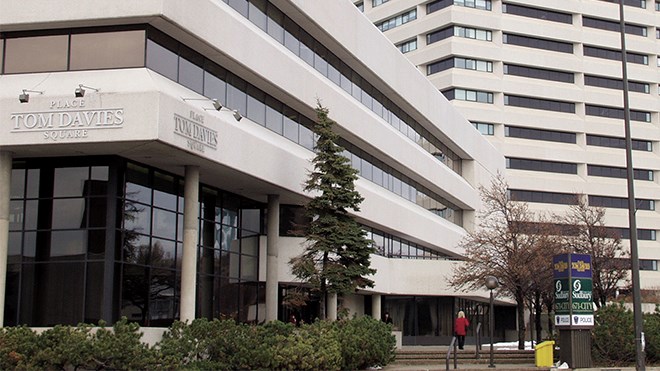Greater Sudbury city council gave themselves more fiscal room Tuesday, voting to expand the limit of how much they can borrow to 10 per cent of net city revenues, up from five per cent.
Under provincial rules, the city can borrow up to 25 per cent, which amounts to $97 million out of annual revenues of $388 million. But a city policy passed in 2013 restricted borrowing to five per cent of net revenue, or $19 million.
By expanding it to 10 per cent -- about $39 million – it allows councillors to issue 20 or 30 year bonds to finance some of the big projects they have supported, most notably a $80 million to $100 million arena/events centre.
Borrowing is controversial for some residents, acknowledged KPMG economist Oscar Poloni, whose firm helped prepare and present the city's long-term financial plan.
But Poloni said long-term debt, when used with restraint, is a way to ensure an asset like an arena will be paid for by everyone who will use it.
The city has relied on shorter-term debt, which places a disproportionate burden on current taxpayers to fund something like an arena that will be enjoyed by residents for decades to come.
And with the federal and provincial governments flush with infrastructure money in the next couple of years, expanding the limit allows Sudbury to come up with its share of a project without raising taxes.
“The use of debt is obviously something people are sensitive to,” Poloni said. “Different people have different opinions (but) the use of debt allows for intergenerational financing.
“How you fund your capital projects is important ... If you are going to build an arena or a water treatment plant ... that asset will be in use for 50 or 70 years.”
Changing the debt limit was just one part of the 10-year financial plan KPMG helped prepare for the city.
The plan to guide the city's finances from 2018-2028 includes projections for property tax increases – between 2.6 and 3.5 per cent a year – inflation, interest rates and a host of other factors that could impact the city's fiscal position.
And the document will allow councillors to quickly calculate the impact on the budget of any new project or spending plan.
It will be updated every year as information and circumstances change, and in includes planning for different scenarios, such as a surge in energy prices. It also includes measures to evaluate how well the municipality is adhering to the document.
“This is more than just projections,” Poloni said. “It's a bit of a report card.”
Ward 5 Coun. Kirwan wondered how binding details of the plan would be on council.
“What does approving it mean?” Kirwan said. “Do we approve it and just see how things go?”
CAO Ed Archer said the plan is a best estimation of what the city's financial future will look like. But all plans change as soon as they meet reality.
“So you're approving the vision of what the future looks like (but) your annual decisions will determine whether that path should change,” Archer said. “We have a model that we can adjust (so) it will be easier to navigate the future.”
One aspect of the plan raised some concerns with Ward 12 Coun. Joscelyne Landry-Altmann. She wondered why it recommends councillor expense budgets be reviewed by the mayor or CAO, rather than the council's executive assistant.
Poloni said no offence was meant, and that they have no concerns at present. But having an executive assistant review budgets could be a problem because they may not always be comfortable in challenging expenses.
“I meant no disrespect,” Poloni ssaid. “It's not because we think there's a concern. But in my world, I think about what could go wrong.”
Mayor Brian Bigger said the approval of the plan was “a really good news story.”
Councillors now can get instant feedback on the tax and other implications of major expenditures.
“We now have the tools in place, up-to-date information on the state of our assets,” Bigger said. “It allows us the opportunity to invest in our community, as well as fix our assets and we have the opportunity to make changes to this plan during our annual budget process.”
Read the full plan here.
